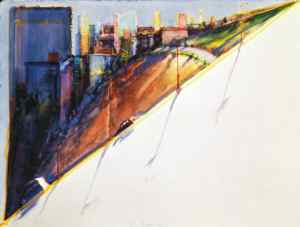Event planner and designer David Stark has a new book out,
David Stark Design. In it, he reveals the artistic process behind thirty unique parties, chronicling his company’s design concepts and philosophies. I love his use of re-purposed items to envision the most creative new uses for them. Up cycling at its best.
When I received the press release, I contacted him to request some nitty gritty details about that facet of his work that intrigues me the most- his use of color. I am thrilled to share with you David's take on color, in his own words.
How do you come up with color schemes for your event designs?I like to create spaces that our guests want to spend time in and inspire them to let loose in! It’s all about setting up the perfect ambiance and establishing a mood. When focusing on lighting, I tend to choose colors that are flattering on all people…because everyone wants to look great right? When you look great, you feel great, and essentially exude a positive vibe. That being said, lighting is key in creating a successful color scheme. Warm tones such as pinks, ambers, peaches, and lilacs are much more complimentary casts on guests than that of blues, reds, and greens. I save the saturated, rich, and vibrant hues for elemental pieces within a color scheme.
However, for the 2006 opening soiree for the new wing of the Minneapolis Institute of Arts, I opted for a pure white canvas, using lighting as the primary converter for color.
Guests witnessed the same space transform as it was bathed in ever-changing lights and become a magical, dreamlike wonderland.
What is your process like when determining a palette: i.e. what sort of issues must be considered when dealing with color for an event?There’s no stock answer across the board as far as color is concerned. We have a variety of events and each of our event designs are customized catering to our client. We generally try to maintain a balance between our client’s desires, the season of an event, and elements used within the design. Sometimes you can’t really define a color muse; there is no particular rhyme or reason as to why certain hues are chosen. They just fall into place.
Color inspiration can often times reveal itself in elemental pieces used within the design, as was the case for the Tate Museum’s first fundraiser in the United States in May of 2007.
A magnificent curtain of blue-green cascading paint chips were assembled in rows to subtly identify with and explore the Tate’s branding colors. (
editors note: there are 18 colors in the Tate palette which are divided into strong hues and subtle hues.) The monochromatic color palette stemmed from not only a visually stunning concept, but one that was embedded with meaning and subtly gestured the museum’s identity.
We wanted our elemental use of color to take center stage, as it rightfully did, but equally important as I mentioned earlier, the lighting cast a complimentary soft rose glow upon our elite guests and set the tone for a truly outstanding event.
Any other design-related expert tips on color?My buddy Jonathan Adler once said, "All colors match," and that has stayed with me since. Sometimes a client comes to me with a color preference that is not my favorite, but I have to learn to LOVE it to do a great job.
Lavender is a case in point, but after many lavender weddings, I now have the most beautiful lavender bedroom that I adore! (
wink)
Thanks so much to David Stark for taking the time to give us a little glimpse into the inner workings of his glorious palettes and magical designs.






































